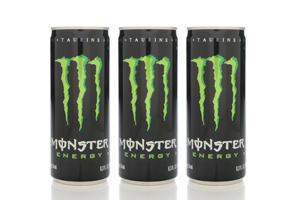Not all monsters are the same
Confusion wasn’t the conclusion, notes Leanne Gulliver. T-274/17, Monster Energy v EUIPO and Bösel (MONSTER DIP), General Court, 13th December 2018.

T-274/17, Monster Energy v EUIPO and Bösel (MONSTER DIP), General Court, 13th December 2018
Key points
- The lack of similarity between goods and services at issue precludes any likelihood of confusion within the meaning of Article 8(1)(b)
- When assessing similarity of goods or services, all the relevant factors relating to those goods or services should be taken into account
- If an argument relies on reputation, the relevant public only has to be able to establish a link between the marks, and not necessarily to be confused
Energy drinks brand Monster Energy Company unsuccessfully opposed EU trade mark (EUTM) application No 0131182811 (the Application) for a figurative mark (the Monster Dip Mark) filed by Marco Bösel. Bösel applied to register the Monster Dip Mark for goods and services in classes 2, 37 and 40, which include paints, coatings, the painting of vehicles and the customisation of coating preparations.
Monster Energy appealed the Opposition Division’s (OD’s) decision, which was upheld by the Board of Appeal (BoA), before appealing the decision to the General Court (GC).
Action history
Monster Energy had opposed the Application on the basis that: (i) it was confusingly similar to its earlier trade marks; (ii) Monster Energy’s earlier trade marks enjoy a reputation, which affords them broader protection to prevent the registration of the Application; and (iii) Monster Energy owns unregistered rights in the UK that are sufficient to prohibit use of the Application.
Monster Energy relied on several earlier EUTM registrations, including the word marks MONSTER ENERGY (classes 9, 14, 24, 26, 28 and 35) and MONSTER (classes 7, 8, 11 and 21), and two figurative marks containing the verbal elements MONSTER ENERGY (covering classes 5, 9, 14, 24, 26, 28 and 32).
The OD rejected the opposition in its entirety, and Monster Energy appealed the decision to the BoA, which upheld the OD’s decision.
Monster Energy further appealed the decision to the GC on the basis that the BoA wrongly found that: (i) the goods and services covered by the MONSTER DIP Mark were dissimilar to the goods and services covered by the earlier marks, in particular the goods “stickers”, “decals” and “transfers” in class 16, covered by the earlier EU figurative mark MONSTER ENERGY; and (ii) there was no conceptual similarity between the EU figurative mark MONSTER ENERGY and the MONSTER DIP Mark.
Rejection
The GC upheld the BoA’s decision, and rejected the opposition. It agreed with the BoA that the goods and services covered by the parties’ marks were dissimilar. None of Monster Energy’s class 16 goods could be considered to be identical or similar, particularly given that the goods and services in question differ in their nature, intended purpose, users, distribution channels and points of sale. As the goods and services are not complementary, the BoA was not required to examine similarity between the signs.
Further, the GC concluded that the BoA was correct to find that the relevant public would not have established a connection between the earlier EU figurative mark MONSTER ENERGY and the MONSTER DIP Mark. Consequently, the use of the latter would not injure the distinctiveness of that earlier figurative EUTM. The BoA had correctly carried out its assessment, taking into account all the elements of the marks at issue, and rightly held that the marks were similar only to the part of the EU public that would understand the meaning of “monster”.
Leanne Gulliver is a Chartered Trade Mark Attorney at Osborne Clarke LLP

